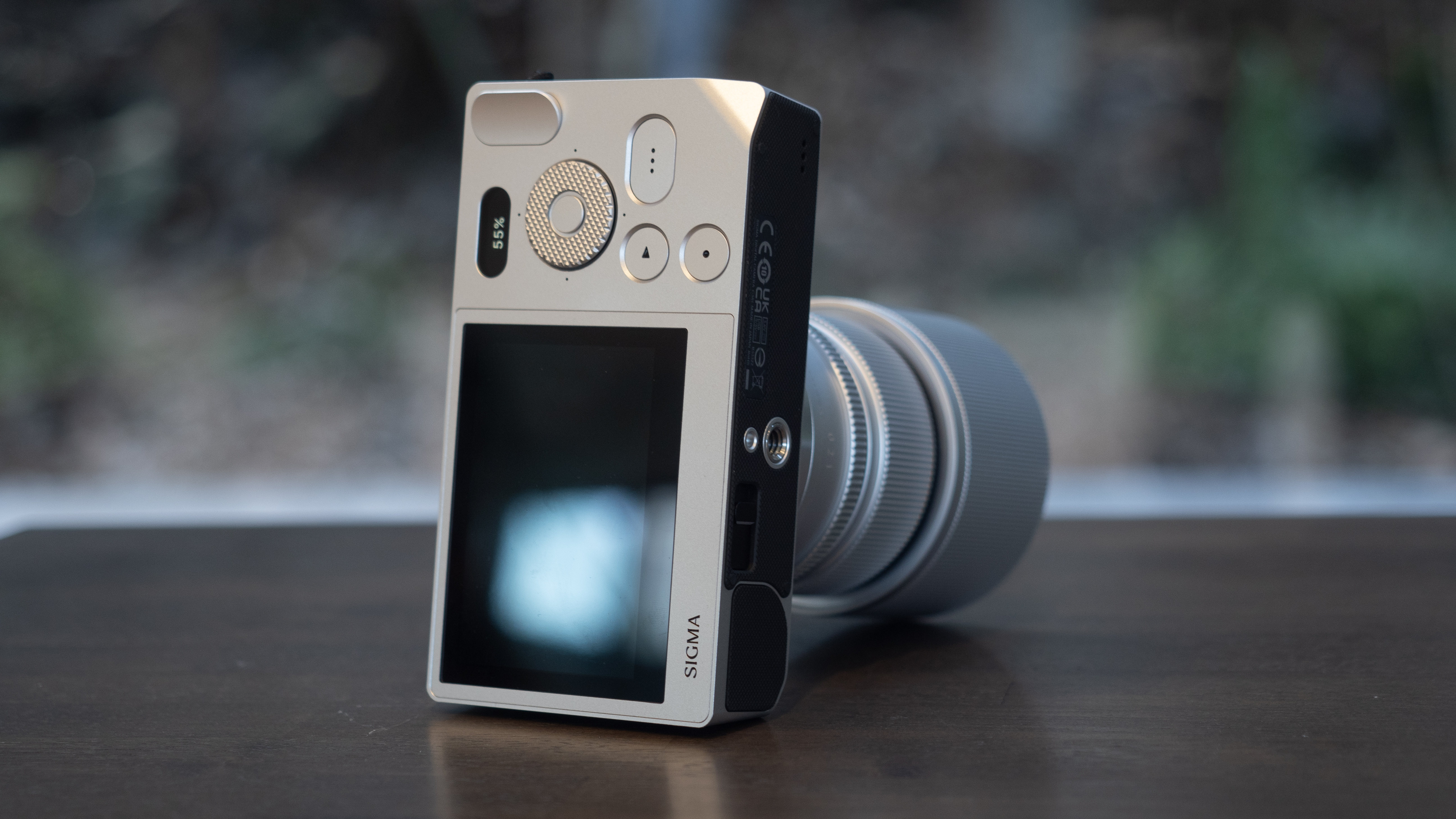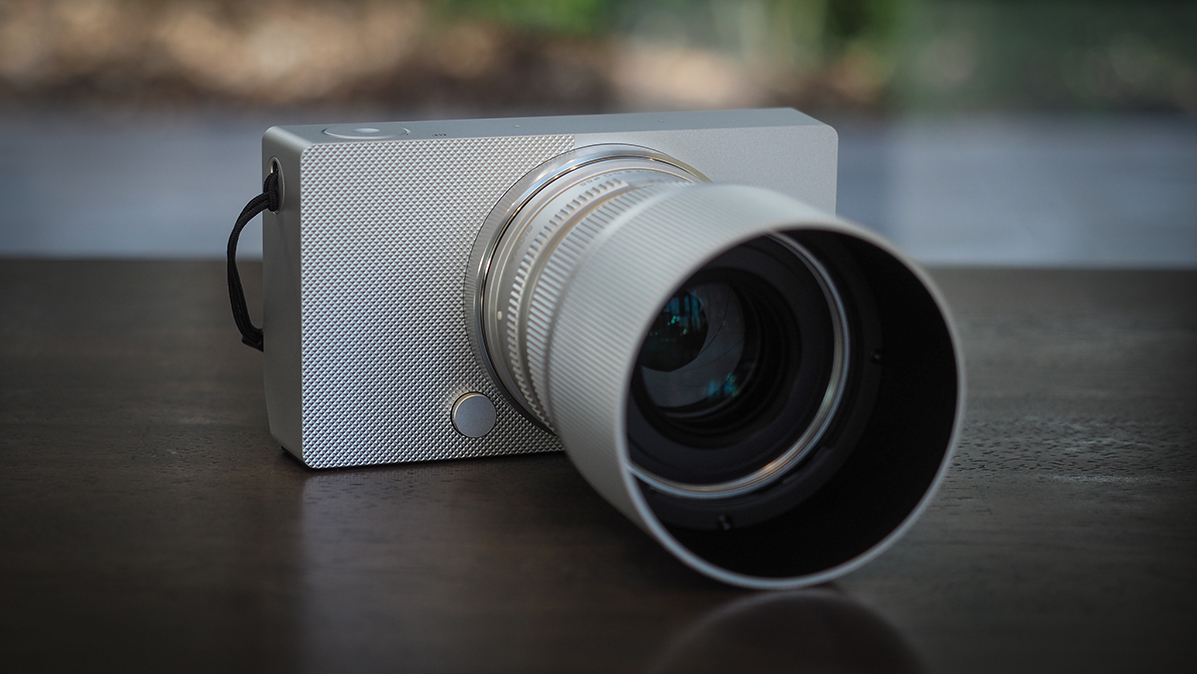"The Sigma BF is as audacious as it is daring, but it’s hard to pin down exactly what it is. Fashion statement? Prestige product? Luxurious point-and-shoot camera? All the above?"
The Sigma BF has set out to rewrite the camera design rulebook – and therein lie its greatest strengths and compromises

After we applauded the current fashion for retro camera designs – as exemplified by the Nikon Zf and the OM System OM-3 – what to make of the pared-back Sigma BF?
Sigma says it has deliberately stepped away from any conventional camera design elements in the pursuit of “radical simplicity” and the idea of “an everyday camera” that also works as an alternative to a smartphone.
Of course, with a price tag just shy of $2,000 / £2,000 / AU$4,000 before you add an L-mount lens, the BF is anything but “everyday” – and, as a full-frame L-mount mirrorless camera, it’s up against some pretty serious competition.
But there, I suspect, is where many of us reviewers are going wrong and – but I’m conceding only possibly – missing the point of the BF. No matter which way you look at it, Sigma is challenging everything we think that a contemporary mirrorless camera should be… and, indeed, what it should do and how it should do it.
The BF is unquestionably radical and its designers have relentlessly pursued their goal seemingly completely shut off from any taint of tradition or convention. We’re told that ‘BF’ stands for “beautiful foolishness”, which was a term originally used in reference to Japan’s traditional tea ceremony. But it’s apt because, while the camera is undoubtedly beautiful, it’s hard not to conclude it’s also foolish.
The one-piece aluminum bodyshell is a work of industrial art, and here the simplicity works beautifully; it looks great and feels even better. But then somebody has dived into Leica’s Das Wesentliche playbook and taken the concept of stripping down to the bare essentials way beyond what the Germans have ever dared.
There’s more than a hint of the Leica T in the Sigma BF, with both the design concepts and their execution having much in common. But Leica didn’t go quite as bonkers with the delete button – which, perhaps to Sigma’s way of thinking, means it didn’t go far enough, so the final result was a compromise.
The best camera deals, reviews, product advice, and unmissable photography news, direct to your inbox!
But has Sigma gone too far? At what point does maintaining a purity of design at all costs start to come at the cost of some other things, particularity practicality and usability?
The BF doesn’t have an electronic viewfinder, there’s neither a hotshoe nor a built-in flash, no memory card slot, no wireless communications, no physical shutter and no IBIS. The monitor screen is fixed and there’s one interface – a USB C port – along with just a handful of external controls.
You’d think there’s some essentials in that little lot, wouldn’t you. But the camera’s massive internal memory is nice (if potentially problematic) and many photographers don’t use flash – especially with the high ISO performance of a 24MP full-frame sensor being so good. And I, for one, don’t use any wireless functions so that’s not an issue for me.
The real biggie – especially for me in Australia, where the sun shines a lot – is the fixed monitor along with the absence of an EVF. For a camera supposedly designed primarily for keen photographers and with the stated aim of eliminating “everything that distracts from your interaction with the image”, not including a viewfinder is a very big miss indeed.
It’s likely some of this has to do with maintaining a purity of form, but function has suffered accordingly. The BF’s user interface is nice, though not as simple as Sigma would have you believe – but then it really can’t be, with a camera that has a pretty decent feature set. If, like me, you’re of A Certain Vintage, you’ll need to unlearn some basics, but it does work well and becomes ever more efficient with practice.
Messing around with the fundamentals of camera design has had mixed success in the past – the Leica T series had a comparatively short life – which is definitely one reason why the retro camera designs are doing so well.
The Sigma BF is as audacious as it is daring, but it’s harder to pin down exactly what it is… fashion statement, style icon, prestige product, unique high-end camera or a luxurious point-and-shooter? There’s the potential to be all of these things and, despite my initial misgivings, it’s fun to use if occasionally frustrating (which will surely go over time).
Thinking outside the square is always a gamble, especially when there are such well-established – and accepted – rules of engagement, as is the case with camera design and operation. Sigma is to be commended for taking a totally different path, but there’s no question that the way ahead from here will have its challenges.
You might also like…
Take a look at our full Sigma BF review, and if it wins you over then check out the best L-Mount lenses to pair with it.

Paul has been writing about cameras, photography and photographers for 40 years. He joined Australian Camera as an editorial assistant in 1982, subsequently becoming the magazine’s technical editor, and has been editor since 1998. He is also the editor of sister publication ProPhoto, a position he has held since 1989. In 2011, Paul was made an Honorary Fellow of the Institute Of Australian Photography (AIPP) in recognition of his long-term contribution to the Australian photo industry. Outside of his magazine work, he is the editor of the Contemporary Photographers: Australia series of monographs which document the lives of Australia’s most important photographers.
You must confirm your public display name before commenting
Please logout and then login again, you will then be prompted to enter your display name.

